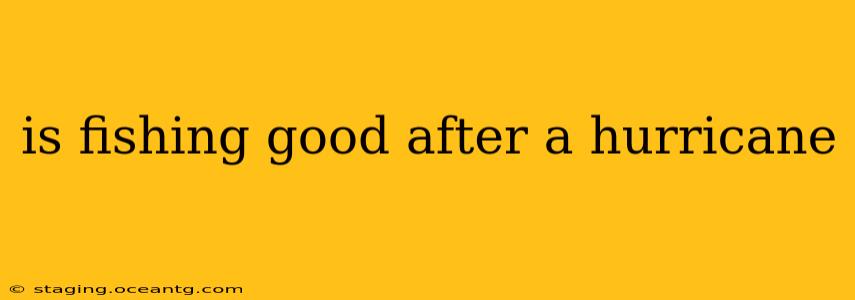Hurricanes wreak havoc on coastal ecosystems, leaving behind a trail of destruction that significantly impacts marine life and fishing conditions. While the immediate aftermath is undoubtedly perilous, the question of whether fishing is good after a hurricane is complex and depends heavily on several factors. This article explores the impact of hurricanes on fishing and offers guidance on when and where it might be safe and productive to cast your line.
What Happens to Fish During and After a Hurricane?
Hurricanes generate powerful storm surges, high winds, and torrential rainfall, all of which disrupt marine habitats. Fish may be displaced from their usual feeding grounds, forced into unfamiliar territories, or even killed by the intense changes in water conditions. The storm surge can scour the seabed, altering habitats and impacting the availability of food sources. Freshwater runoff can also drastically change the salinity levels in coastal waters, affecting fish species sensitive to these changes.
Is Fishing Safe Immediately After a Hurricane?
No. Immediately following a hurricane, venturing out onto the water is extremely dangerous. Debris, including submerged trees, broken docks, and even entire buildings, creates a significant navigational hazard. Strong currents and unpredictable waves pose a serious threat to smaller vessels. Furthermore, the water itself may be contaminated with pollutants, debris, and bacteria, making it unsafe for both fishing and consumption of any catch. Prioritizing safety is paramount; wait for official announcements declaring waters safe for navigation before considering any fishing trips.
How Does Hurricane Damage Affect Fishing Spots?
Hurricane damage significantly alters fishing spots. Structures like piers and jetties may be destroyed, eliminating popular fishing locations. Changes in water depth and bottom structure, caused by erosion and sedimentation, can also disrupt fish populations and their usual patterns. Altered currents and salinity levels can further displace fish, making previously productive spots less appealing. It's crucial to check local reports and updates on fishing access points before heading out.
When Does Fishing Typically Return to Normal After a Hurricane?
The time it takes for fishing to return to a semblance of normalcy varies greatly depending on the hurricane's intensity and the specific location. Minor storms might only cause temporary disruptions, with fishing resuming within days. However, major hurricanes can cause widespread damage, potentially impacting fishing for weeks, months, or even longer, depending on the extent of habitat destruction and the recovery rate of fish populations. Local authorities and fishing guides will usually provide updates on the condition of fishing spots.
What Types of Fish are Affected Most by Hurricanes?
Species that inhabit shallow-water habitats, like inshore reefs and estuaries, are generally more vulnerable to the impacts of hurricanes. These areas are most susceptible to damage from storm surges and freshwater runoff. Species that depend on specific habitats, such as seagrass beds or mangrove forests, might experience significant population declines following a major storm. Deep-sea species, generally, are less affected.
Are There Any Benefits to Fishing After a Hurricane (Long Term)?
While the immediate aftermath is negative, some long-term benefits may arise. In some cases, hurricanes can redistribute nutrients and create new habitats, ultimately benefiting fish populations over time. Damaged areas might regenerate with a more diverse array of species, leading to potential changes in fishing opportunities down the line. However, these are long-term impacts, and the immediate focus must be on safety and responsible resource management.
Remember: Always prioritize safety and respect local regulations when fishing after a hurricane. Check official advisories, be aware of debris and dangerous conditions, and practice responsible catch-and-release techniques to aid in the recovery of fish populations.
